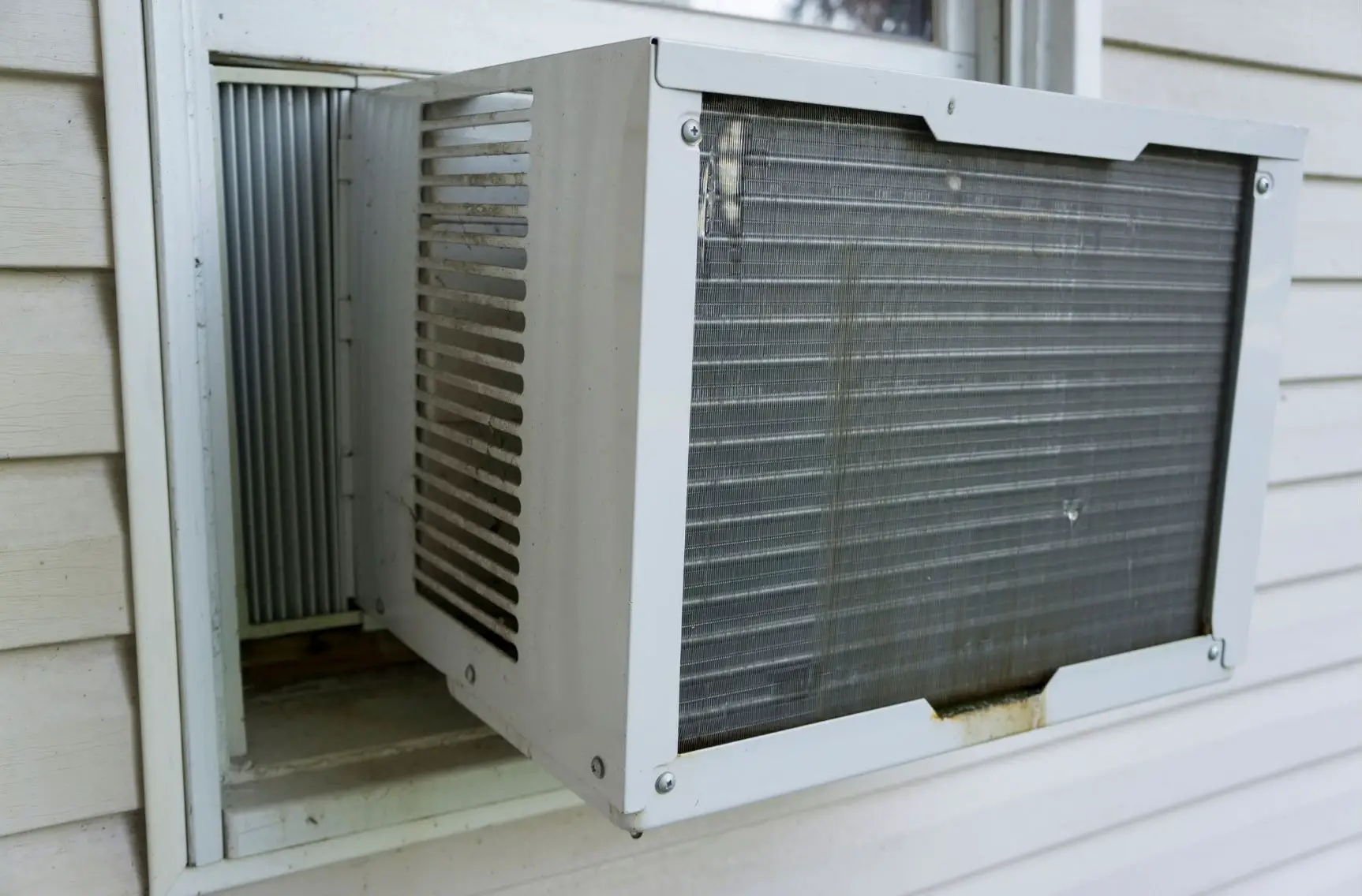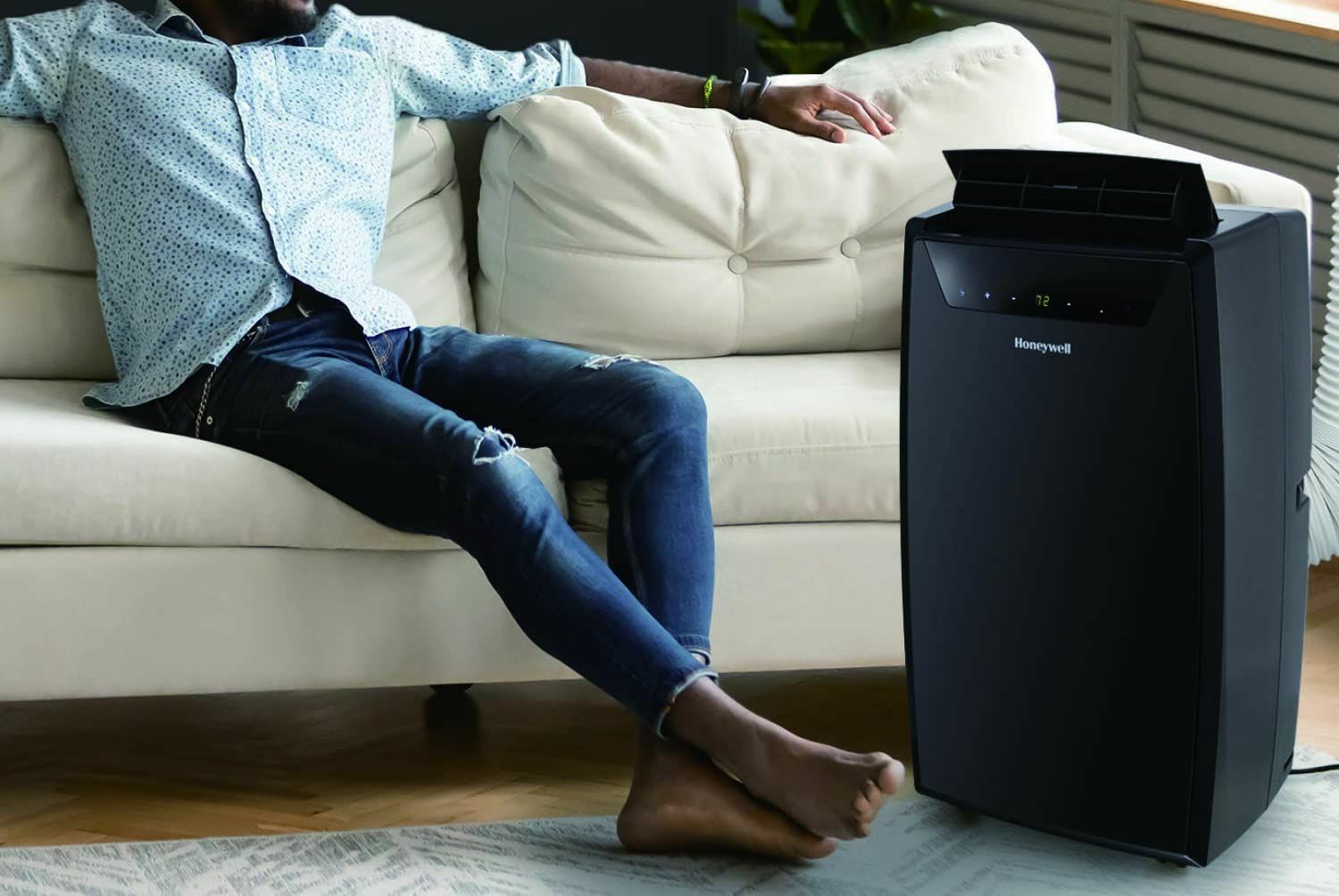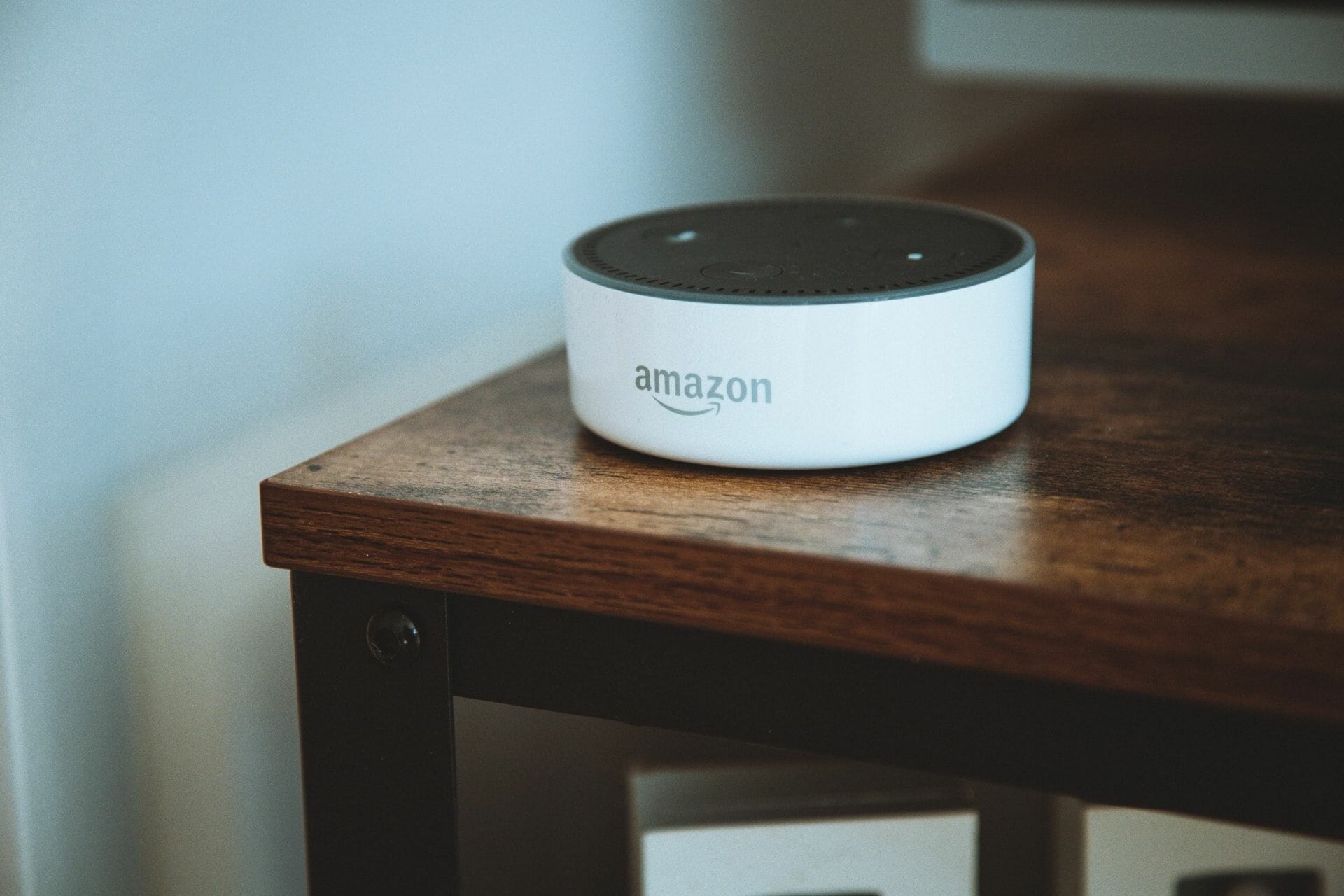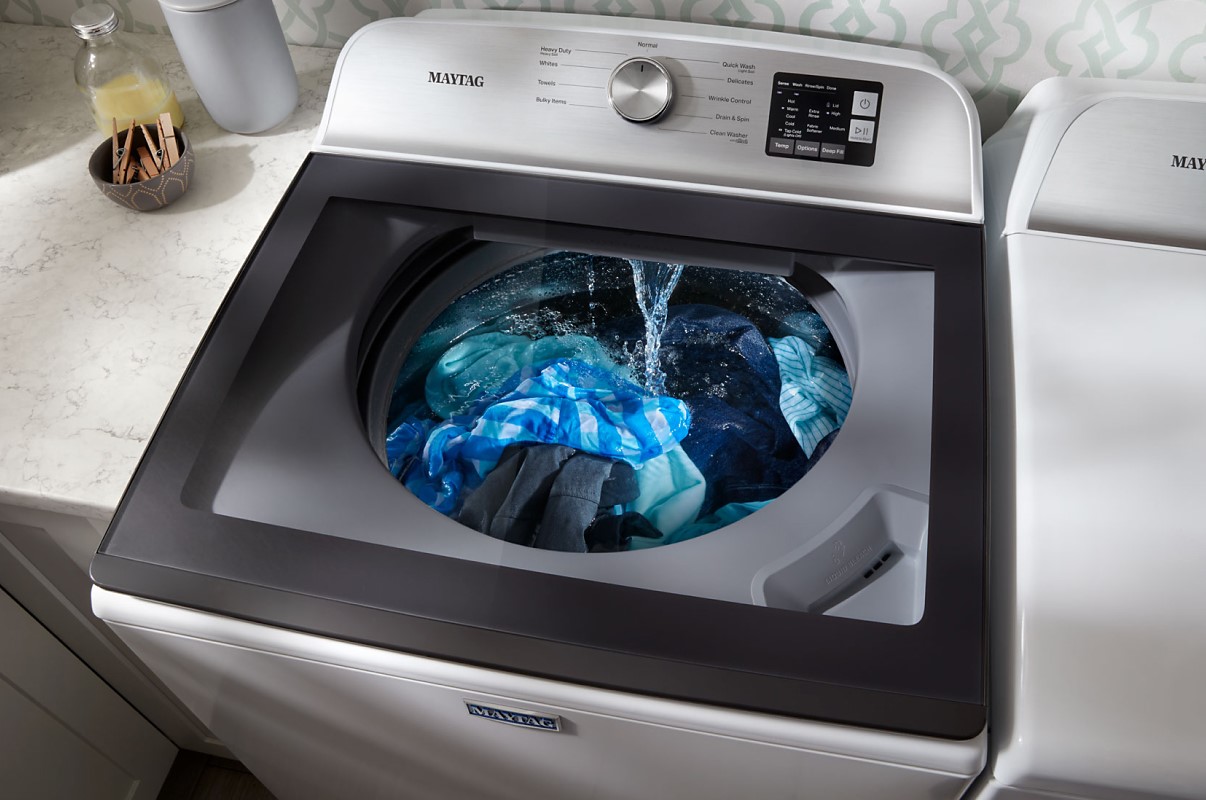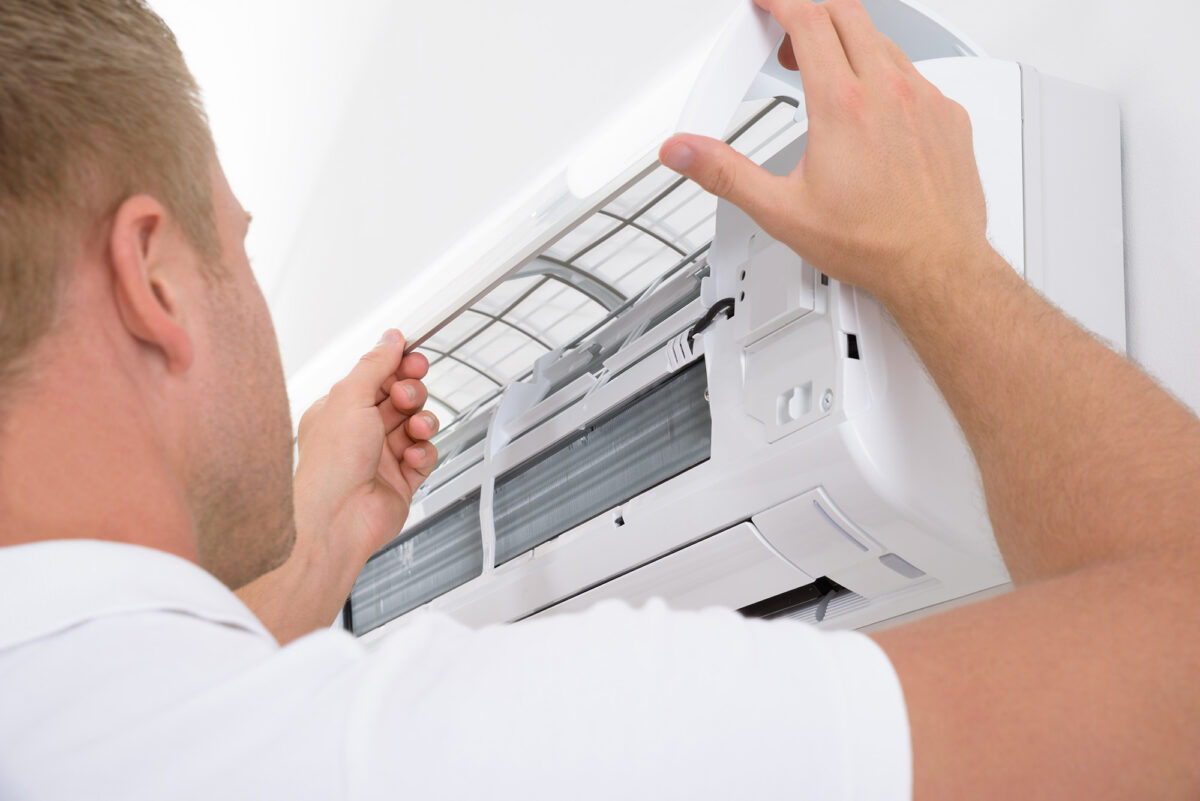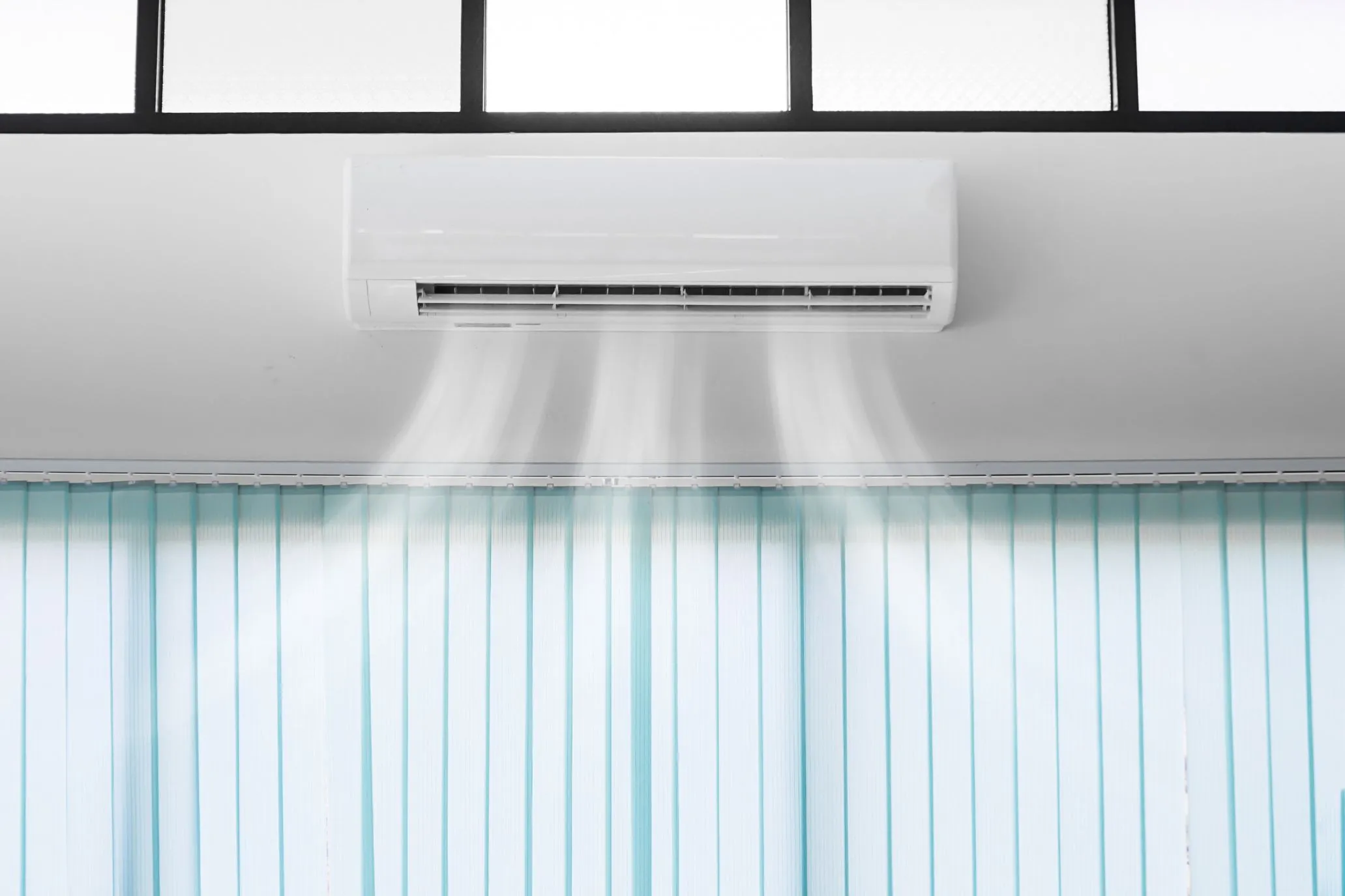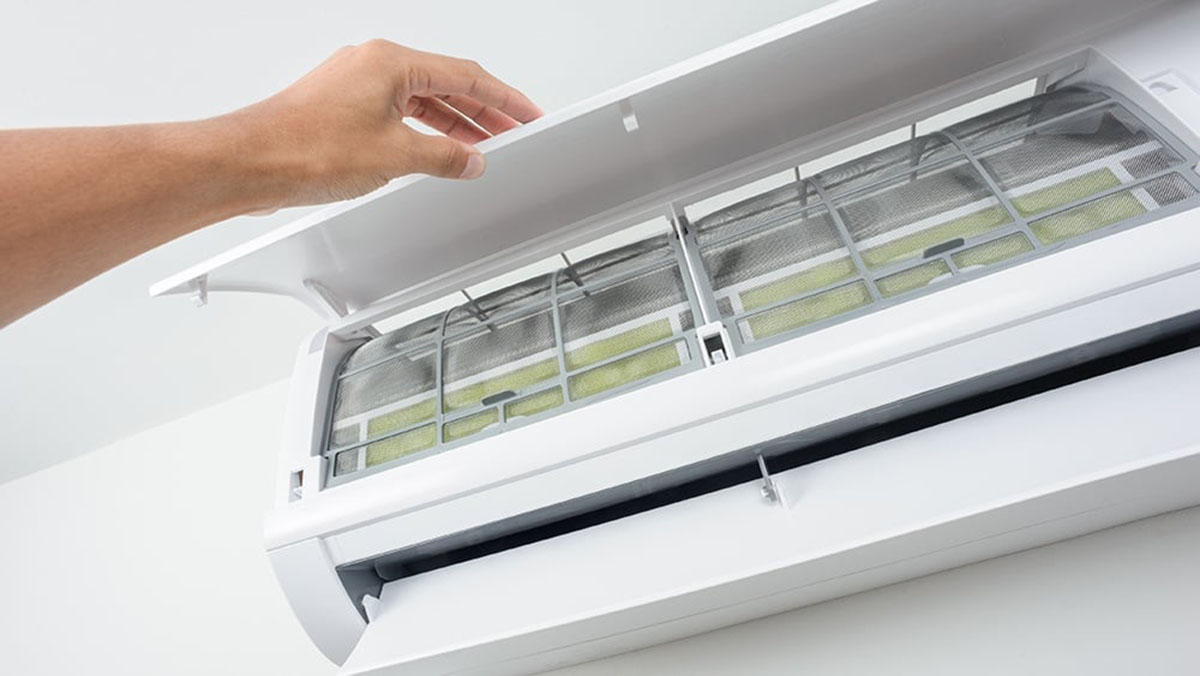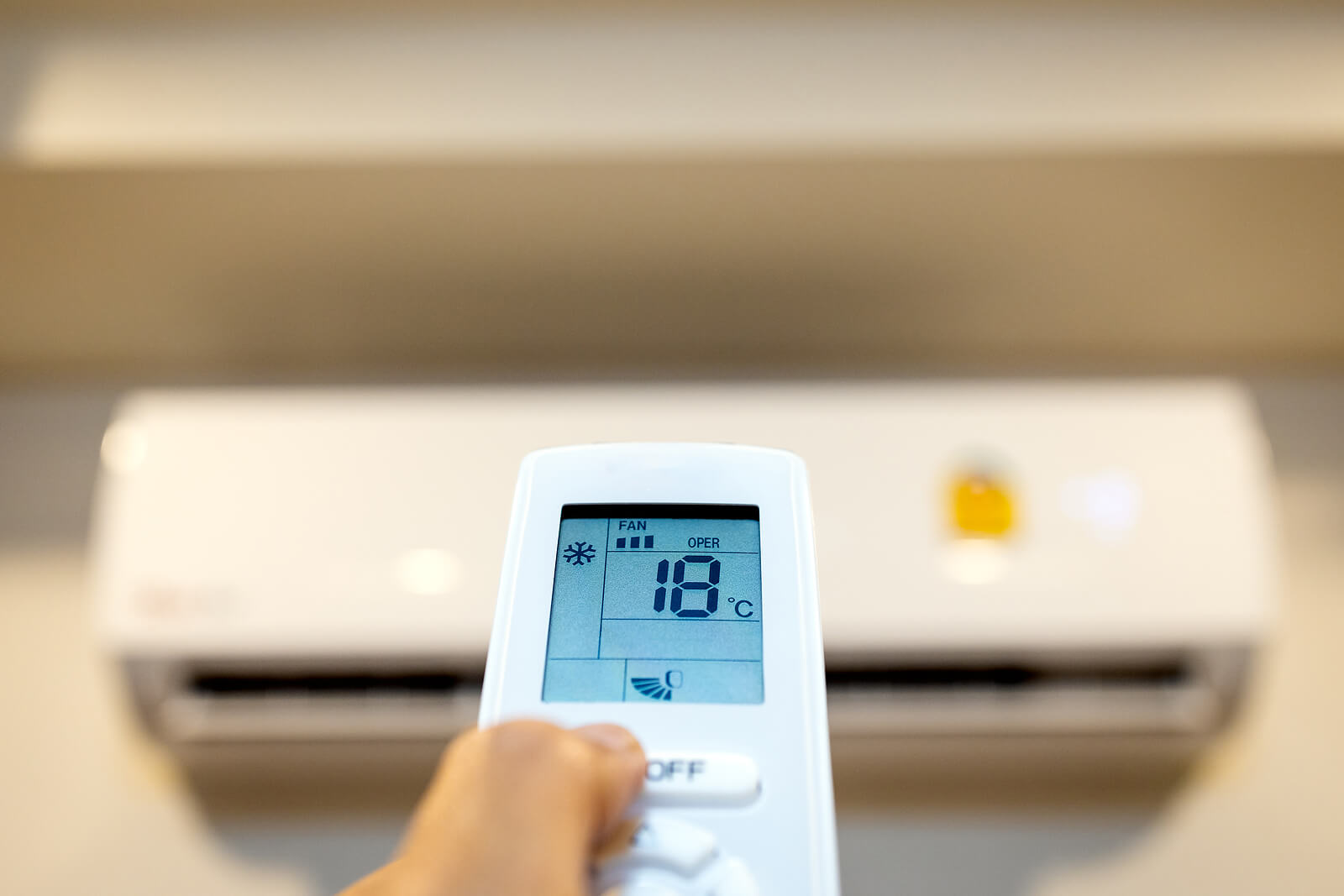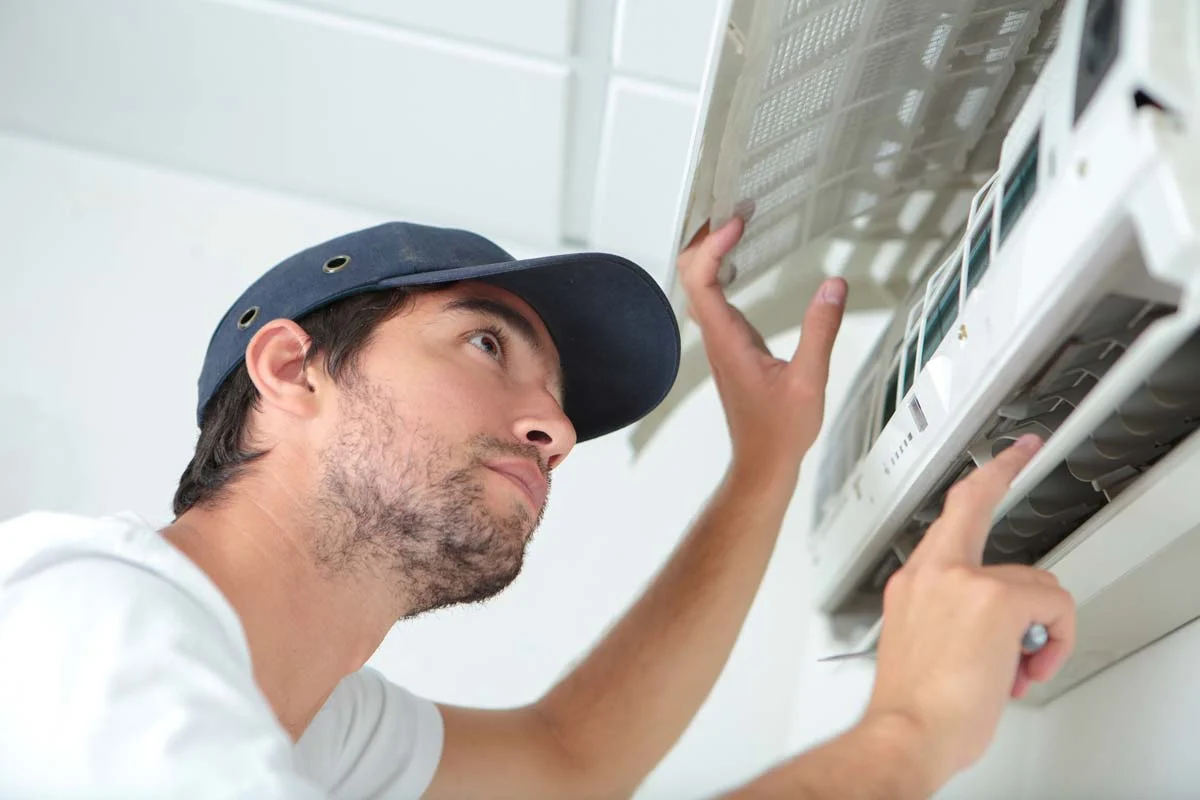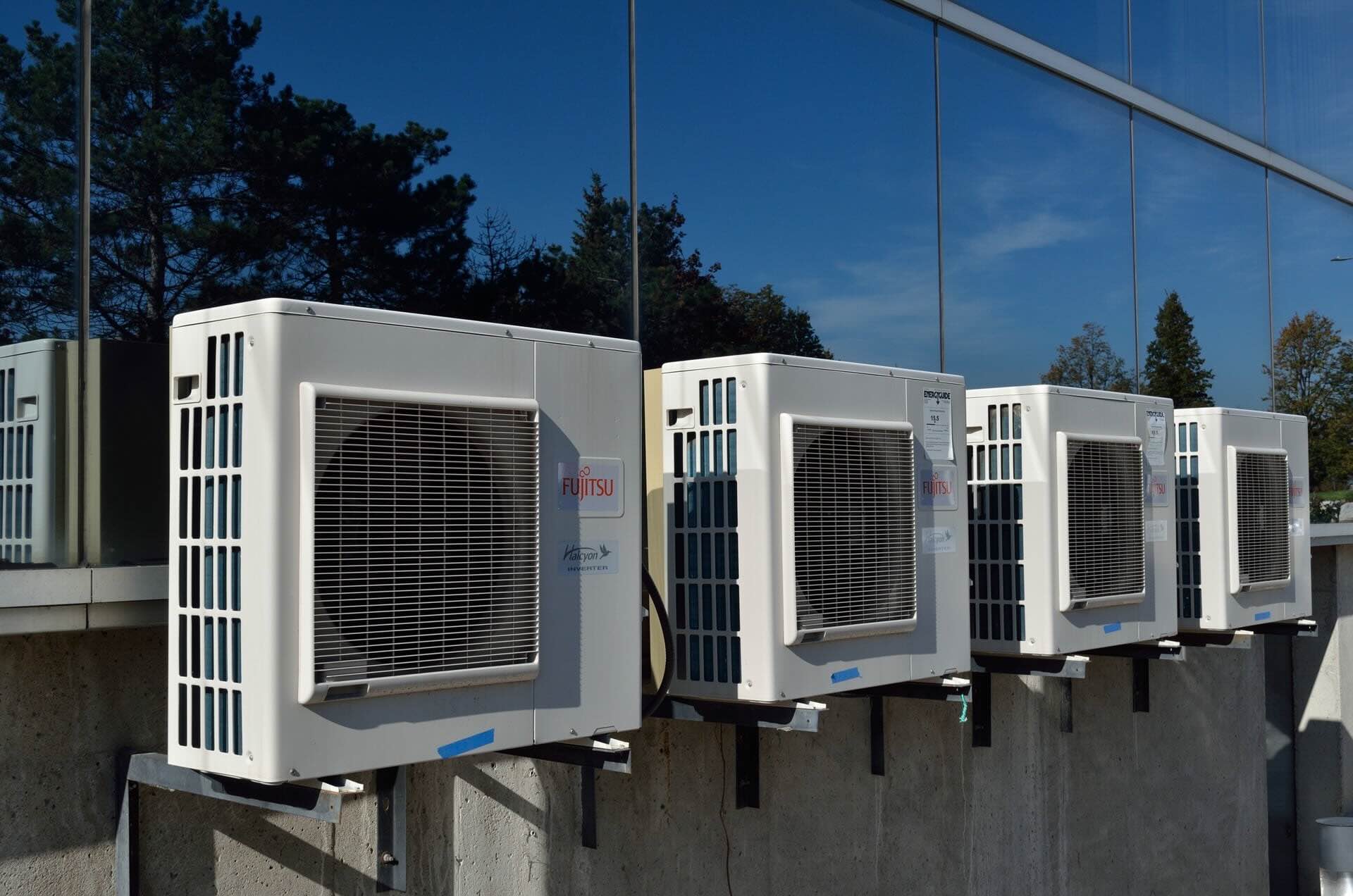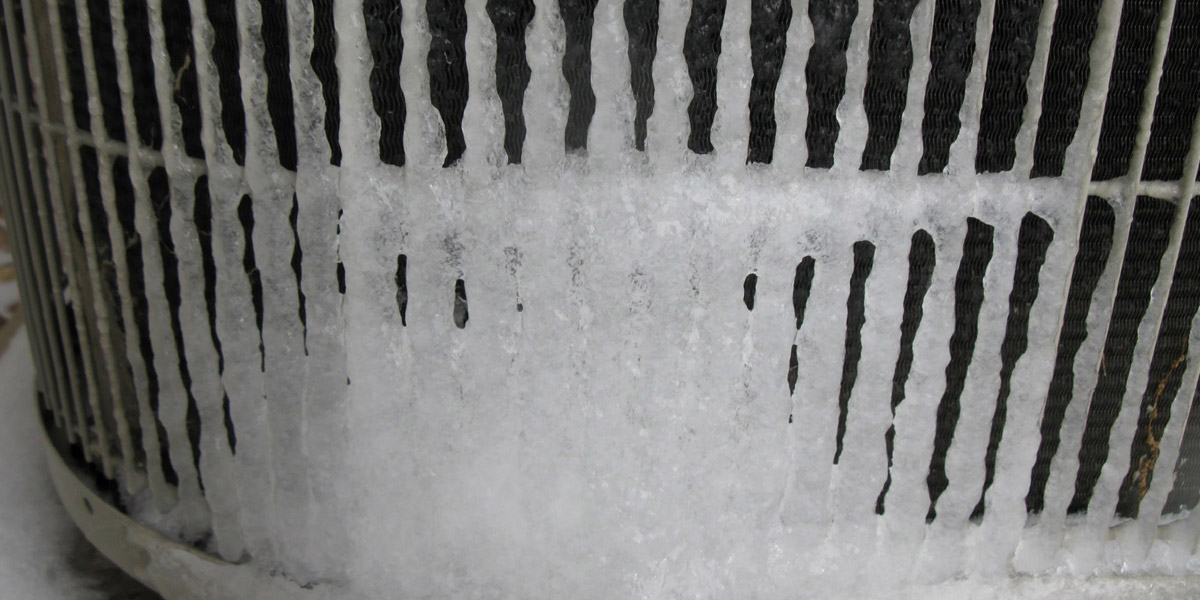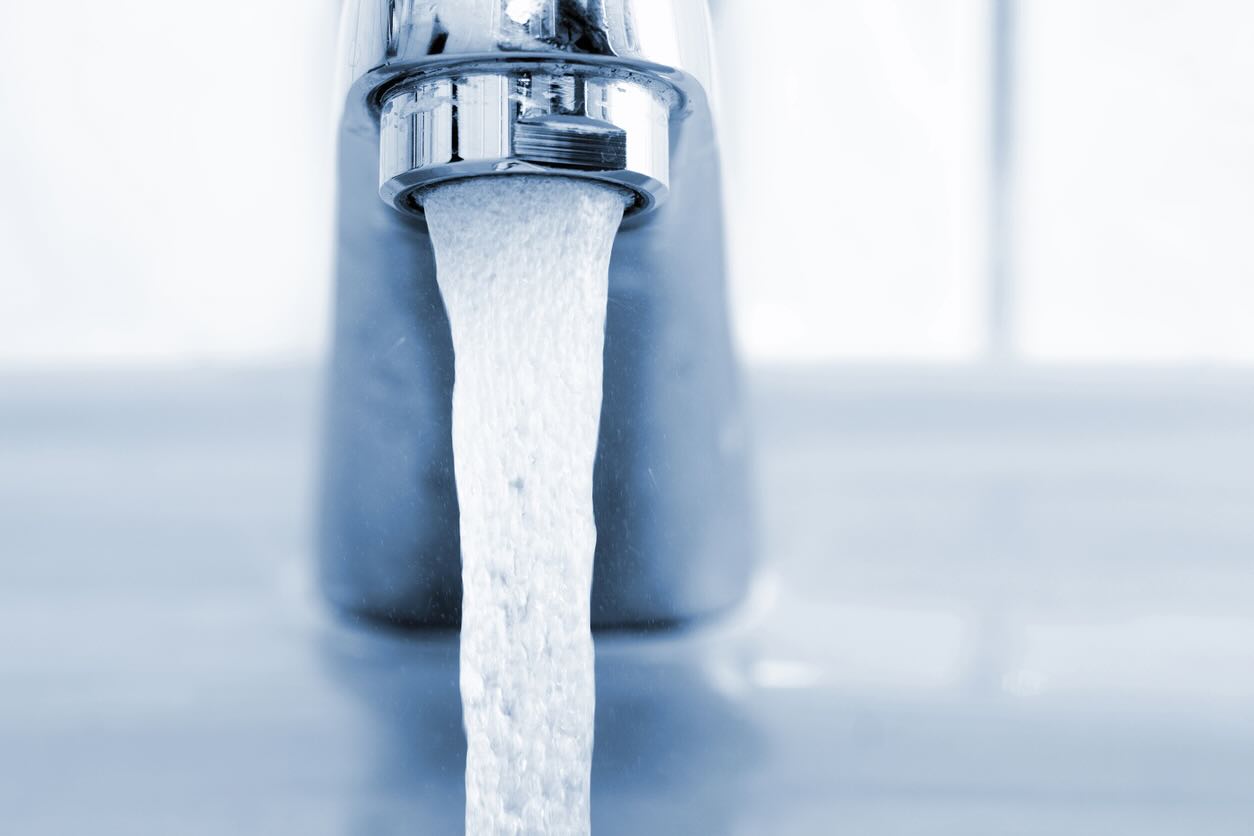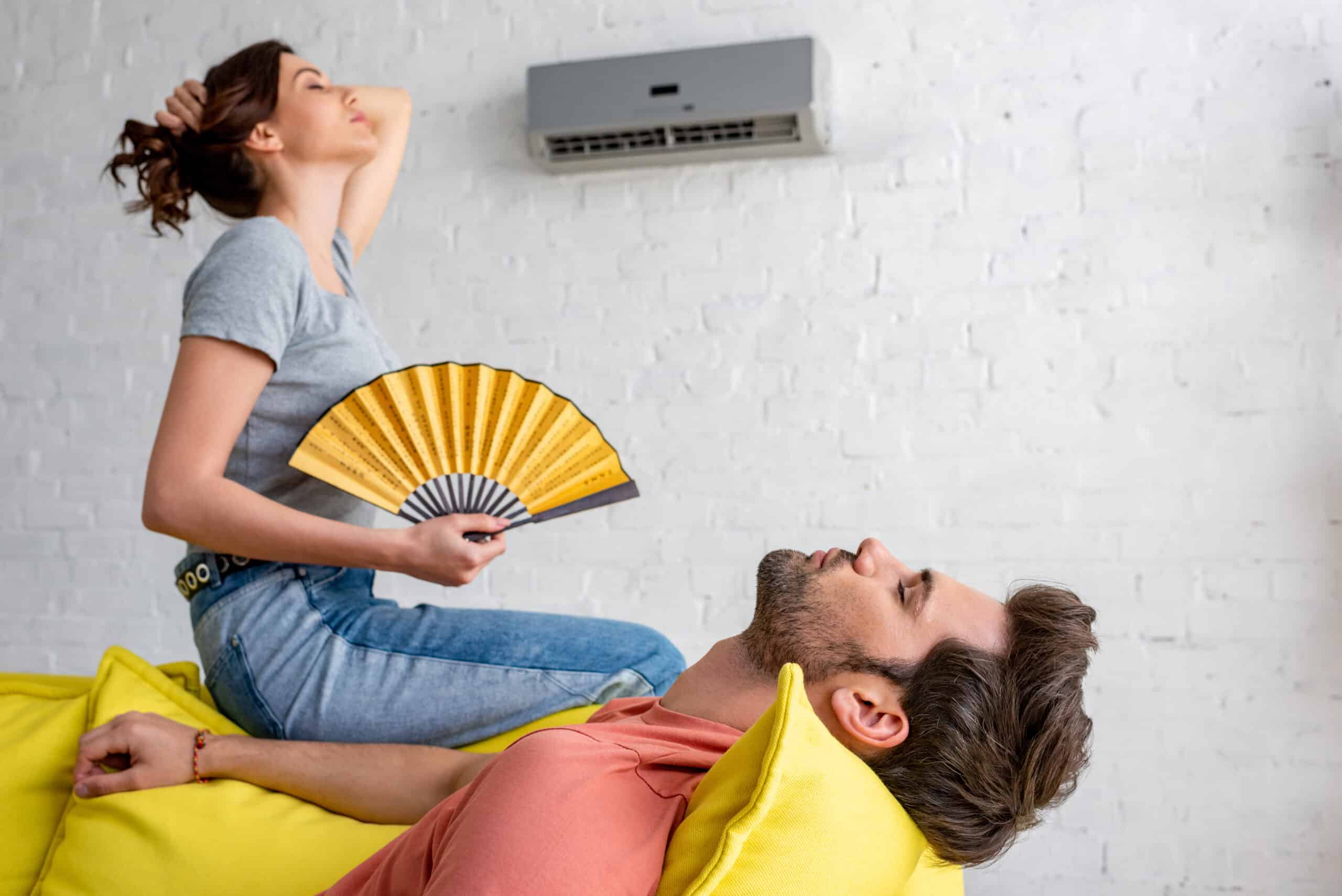Home>Home Maintenance>Why Do I Hear Water Dripping In My Air Conditioner
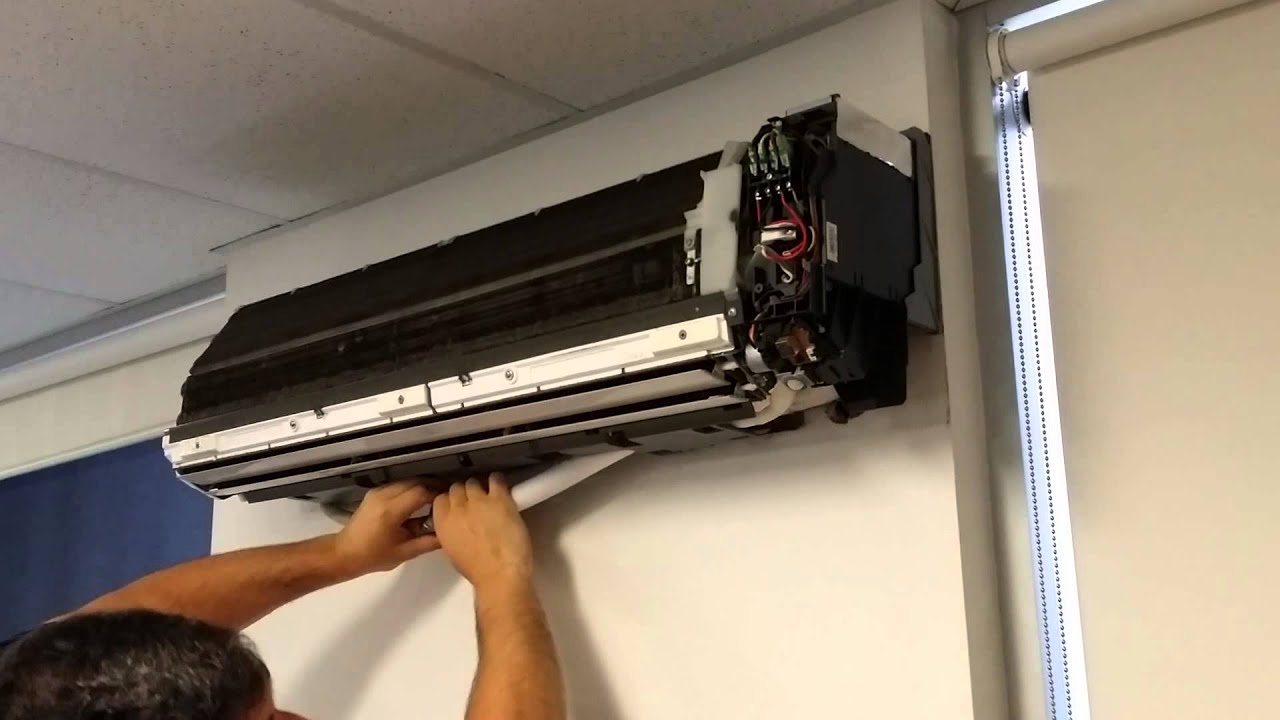

Home Maintenance
Why Do I Hear Water Dripping In My Air Conditioner
Modified: August 17, 2024
Find out the reasons for hearing water dripping in your air conditioner and discover effective home maintenance tips to solve the issue.
(Many of the links in this article redirect to a specific reviewed product. Your purchase of these products through affiliate links helps to generate commission for Storables.com, at no extra cost. Learn more)
Introduction
Have you ever experienced the annoying sound of water dripping in your air conditioner? If so, you’re not alone. Many homeowners encounter this issue, and it can be quite perplexing. Water dripping in an air conditioner is not only disruptive, but it can also indicate a potential problem in your cooling system.
In this article, we will explore the common causes of water dripping in air conditioners and provide solutions to fix this issue. Understanding the underlying reasons behind water leakage can help you take the necessary steps to prevent further damage and maintain the optimal performance of your air conditioning unit.
So, let’s dive in and find out what could be causing that pesky water drip sound in your air conditioner.
Key Takeaways:
- Don’t ignore water dripping in your air conditioner! It could be due to clogged drain lines, dirty filters, or low refrigerant levels. Regular maintenance and prompt repairs can keep your AC running smoothly.
- Proper installation and regular cleaning are key to preventing water dripping in your air conditioner. Addressing issues like clogged filters and condensate pump problems can ensure a cool and worry-free home.
Common Causes of Water Dripping in Air Conditioners
There are several potential reasons why you might hear water dripping in your air conditioner. Let’s take a closer look at some of the most common causes:
- Condensate Drain Line Issues: One of the main culprits behind water dripping is a clogged or blocked condensate drain line. Over time, dust, dirt, and debris can accumulate in the drain line, causing a buildup that restricts the flow of condensation away from the unit. When this happens, the water can back up and leak into your home.
- Clogged Air Filter: Your air conditioner’s air filter plays a crucial role in filtering out dust and particles from the air. If the filter becomes dirty or clogged, it can restrict the airflow, causing the evaporator coil to freeze up. When the coil thaws, excess water can drip, resulting in the water sound you hear.
- Dirty Evaporator Coil: The evaporator coil in your air conditioner is responsible for cooling the air. However, if it becomes dirty or coated with dust, it can lead to reduced airflow and inefficient cooling. As a result, excess moisture can collect on the coil and eventually drip down, causing the water sound you’re experiencing.
- Low Refrigerant Levels: Refrigerant is vital for the proper functioning of your air conditioner. If your unit is low on refrigerant, it can lead to a drop in pressure, causing the evaporator coil to freeze. When the coil eventually thaws, it can result in water dripping.
- Improper Installation: In some cases, water dripping in an air conditioner can be attributed to poor installation. If the unit is not installed correctly, it can lead to improper drainage and water leakage.
These are just a few of the common causes of water dripping in air conditioners. It’s important to address these issues promptly to prevent any further damage to your cooling system and your home. In the next sections, we will discuss the ways you can fix water dripping in your air conditioner.
Condensate Drain Line Issues
One of the most common reasons for water dripping in air conditioners is a clogged or blocked condensate drain line. The condensate drain line carries the condensation that accumulates during the cooling process away from the air conditioner unit. When this drain line becomes clogged, the water has nowhere to go and ends up dripping inside the unit or even leaking out onto the floor.
To fix this issue, you can try the following steps:
- Check the drain line: Locate the condensate drain line, which is usually a PVC pipe attached to the indoor unit. Inspect the line for any blockages or obstructions. If you see any dirt or debris, gently clear it away using a brush or a pipe cleaner.
- Clean the drain pan: The drain pan is located beneath the evaporator coil and collects the condensation. Over time, it can become dirty or clogged, resulting in drainage issues. Remove the access panel to the evaporator coil and check the drain pan for any debris. If there is dirt or buildup, clean it using a mixture of water and mild detergent. Ensure that the drain pan is securely in place and free from any cracks or damage.
- Use a wet/dry vacuum: If the above steps don’t clear the clog, you can try using a wet/dry vacuum to remove the blockage. Connect the vacuum to the condensate drain line and set it to suction mode. This can effectively remove any stubborn debris or obstructions.
- Flush the line: If the clog persists, you can try flushing the drain line with water. Attach a hose to the line or use a funnel to pour water into it. This can help dislodge any remaining debris and allow the water to flow freely.
If you are unsure about how to address the condensate drain line issue or if the problem persists even after trying these steps, it is recommended to seek the assistance of a professional HVAC technician. They have the expertise and tools to diagnose and fix the problem effectively.
Clogged Air Filter
A clogged air filter can also contribute to water dripping in your air conditioner. The air filter is responsible for capturing dust, dirt, and other particles from the air, ensuring that clean air is circulated throughout your home. However, over time, the air filter can become dirty and obstructed, hindering proper airflow and causing the evaporator coil to freeze.
Here are some steps you can take to address this issue:
- Locate the air filter: The air filter is typically located behind the return air grille or slot in your home. It may be in different locations depending on your specific air conditioning system. Consult your user manual or check with an HVAC professional for guidance.
- Remove and inspect the air filter: Turn off your air conditioner and carefully remove the air filter from its housing. Examine the filter for dirt, dust, and debris. If it appears clogged or dirty, it’s time to clean or replace it.
- Clean or replace the air filter: If the air filter is reusable, clean it by gently vacuuming or washing it according to the manufacturer’s instructions. Ensure that it is completely dry before placing it back into the unit. If the filter is disposable, replace it with a new one of the same size and type.
- Regularly maintain the air filter: To prevent future issues, it’s important to maintain a regular air filter cleaning or replacement schedule. Check the filter every month and clean or replace it as needed. This will promote adequate airflow and prevent the evaporator coil from freezing.
By addressing a clogged air filter, you can improve the efficiency of your air conditioner and prevent water dripping issues. Remember to consult your user manual or a qualified HVAC technician if you have any doubts or concerns about the process.
Dirty Evaporator Coil
A dirty evaporator coil can be another cause of water dripping in your air conditioner. The evaporator coil is responsible for absorbing heat from the air and cooling it down. Over time, dust, dirt, and other debris can accumulate on the coil, hindering its efficiency and causing moisture to condense on the surface.
To address this issue, follow these steps:
- Turn off the air conditioner: Before cleaning the evaporator coil, ensure that the air conditioner is turned off to prevent any accidents or damage.
- Locate the evaporator coil: The evaporator coil is typically located in the air handler unit, which is often housed in the basement, attic, or a dedicated utility closet. It may be necessary to remove an access panel to gain access to the coil.
- Clean the coil: Use a soft brush or a vacuum cleaner with a brush attachment to gently remove the dirt and debris from the evaporator coil. Be careful not to bend or damage the delicate fins on the coil. If there is stubborn dirt or buildup, you can use a coil cleaner specifically designed for this purpose. Follow the manufacturer’s instructions for safe and effective use.
- Inspect the drain pan: While you’re cleaning the evaporator coil, take a moment to check the drain pan beneath it. Ensure that it is clean, free from any obstructions, and properly aligned to collect the condensed water.
- Maintain regular cleaning: To prevent future issues, it’s important to regularly clean the evaporator coil. Aim to clean it at least once a year, or more frequently if you live in a dusty environment. This will help maintain its efficiency and prevent water dripping problems.
It’s worth noting that cleaning the evaporator coil can be a delicate process, and if you’re not comfortable doing it yourself, it’s best to seek the assistance of a professional HVAC technician. They have the expertise and tools to safely and effectively clean the coil without causing damage to your air conditioning system.
Read more: Why Do I Hear Popping Noises In My Attic
Low Refrigerant Levels
If you notice water dripping in your air conditioner, low refrigerant levels could be the culprit. Refrigerant is the substance responsible for absorbing heat from the air and cooling it down in your air conditioner system. When the refrigerant levels are low, the system can experience a drop in pressure, causing the evaporator coil to freeze up. Once the coil thaws, the excess water can result in water dripping.
Here’s what you can do to address low refrigerant levels:
- Identify the issue: If you suspect low refrigerant levels, it’s best to have a professional HVAC technician perform a refrigerant leak test. This will help pinpoint the exact location of the leak and determine the appropriate course of action.
- Repair the leak: Once the leak has been identified, the technician will proceed with repairing the leak in the refrigerant lines or coils. This may involve replacing damaged components or tightening connections.
- Recharge the refrigerant: After the leak has been repaired, the technician will recharge the refrigerant to the recommended levels. This involves adding the appropriate amount of refrigerant to the system according to the manufacturer’s specifications.
- Maintain regular maintenance: To prevent future issues with low refrigerant levels, it’s important to schedule regular maintenance for your air conditioning system. This will allow technicians to inspect for any potential leaks and ensure that the refrigerant levels are optimal.
It’s essential to note that handling refrigerant requires specialized knowledge and equipment. It’s strongly recommended to leave this task to trained professionals to ensure the safety and proper functioning of your air conditioning system.
If you hear water dripping in your air conditioner, it could be due to a clogged drain line or a dirty air filter. Check and clean both to prevent further issues.
Improper Installation
If you hear water dripping in your air conditioner, improper installation could be the root cause of the issue. When an air conditioner is not installed correctly, it can result in improper drainage and water leakage.
Here are some signs of improper installation to look out for:
- Inadequate slope: An air conditioner needs to be installed with a slight slope to allow for proper drainage. If the unit is not angled correctly, water can accumulate in the tray or drain pan, leading to water dripping inside the unit.
- Incorrect sizing: If the air conditioner is either oversized or undersized for the space it is cooling, it can lead to various issues, including poor dehumidification. Excess moisture in the system can result in water dripping.
- Misaligned drain pipes: The drain pipes that carry condensate away from the unit need to be properly aligned. If there are any gaps or disconnections in the pipes, water can leak out instead of flowing away from the air conditioner.
If you suspect that improper installation is causing water dripping in your air conditioner, it’s best to consult with a professional HVAC technician. They will be able to assess the installation and make any necessary adjustments or repairs to ensure proper drainage and prevent water leakage.
Remember, proper installation is crucial to the efficiency and longevity of your air conditioning system. Investing in professional installation from the beginning can help you avoid potential issues and costly repairs down the line.
Condensate Pump Problems
If water is dripping from your air conditioner, it could be due to issues with the condensate pump. In some air conditioning systems, a condensate pump is installed to pump water away from the unit when gravity drainage is not possible or practical.
Here are some common condensate pump problems that can lead to water dripping:
- Pump failure: The condensate pump itself may have malfunctioned or stopped working properly. This can be due to a faulty motor, switch, or blocked impeller. When the pump fails, water may accumulate in the tray or drain pan, resulting in water dripping inside the unit.
- Overflow switch activation: Condensate pumps are equipped with an overflow switch that shuts off the air conditioner if the pump fails or if the water level in the tray becomes too high. If the overflow switch is triggered, it can cause the air conditioner to shut down and result in water dripping.
- Clogged pump or discharge line: Over time, the condensate pump or the discharge line may become clogged with debris, algae, or other contaminants. This can impede the flow of water and cause the pump to malfunction or the water to back up and leak.
To resolve condensate pump problems, consider the following steps:
- Check the pump: Inspect the condensate pump for any obvious signs of malfunction or damage. Ensure that it is properly connected, and check for any blockages or obstructions.
- Clean the pump and discharge line: If the pump or the discharge line is clogged, clean them carefully. Remove any debris or buildup that may be causing the blockage using a brush or a pipe cleaner. Running a mixture of water and vinegar through the pump can help dissolve any algae or mold growth.
- Test and reset the overflow switch: If the overflow switch has been triggered, press the reset button to reactivate the air conditioner. Monitor the operation of the condensate pump to ensure proper functioning.
- Consult a professional: If you’re unable to resolve the condensate pump issues or if the problems persist, it is recommended to consult with a professional HVAC technician. They have the expertise and knowledge to diagnose and fix condensate pump problems effectively.
Regular maintenance and cleaning of the condensate pump can help prevent issues and ensure its proper functioning. This will help avoid water dripping problems and potential damage to your air conditioning system.
Damaged or Disconnected Drain Pan
A damaged or disconnected drain pan can be another cause of water dripping in your air conditioner. The drain pan is designed to collect condensation that forms on the evaporator coil and safely route it out of the unit.
If the drain pan becomes damaged or disconnected, it can result in water leakage or overflow. Here’s what you can do to address this issue:
- Inspect the drain pan: Locate the drain pan, usually located underneath the evaporator coil or inside the air handler unit. Examine it for any visible damage, such as cracks or holes, that could cause water to leak or overflow.
- Repair or replace the drain pan: If the drain pan is damaged, you may need to repair or replace it depending on the extent of the damage. Small cracks can often be sealed with epoxy or a compatible sealant. However, larger cracks or irreparable damage may require replacing the drain pan entirely. Consult with a professional HVAC technician for the best course of action.
- Secure the drain pan: Ensure that the drain pan is securely attached and properly aligned beneath the evaporator coil. Any misalignment or disconnection can lead to water dripping or overflow.
- Clean the drain pan: Regularly clean the drain pan to remove dirt, debris, or microbial growth. This will help maintain clear water flow and prevent blockages that could lead to water leakage.
- Perform routine maintenance: Maintaining your air conditioner through regular inspections and maintenance can help identify any issues with the drain pan early on. A professional HVAC technician can thoroughly examine the drain pan during routine servicing and address any problems before they result in water dripping.
Remember, if you’re uncertain about how to repair or replace the drain pan, it’s best to consult with a licensed HVAC technician. They have the expertise and experience to handle the job properly and ensure that your air conditioner operates smoothly without any water leakage or problems.
Read more: Why Is My Range Hood Dripping Water
Ways to Fix Water Dripping in Air Conditioners
If you’re hearing water dripping in your air conditioner, it’s important to address the issue promptly to prevent further damage and maintain the optimal performance of your cooling system. Here are some effective ways to fix water dripping in air conditioners:
- Check and clear the condensate drain line: Inspect the condensate drain line for any clogs or blockages. Clear away any debris using a brush or a pipe cleaner. If necessary, use a wet/dry vacuum to remove stubborn blockages. Flushing the line with water can help dislodge any remaining debris.
- Clean or replace the air filter: A clogged air filter can restrict airflow and cause the evaporator coil to freeze, leading to water dripping. Clean or replace the air filter regularly to ensure proper airflow and cooling efficiency.
- Clean the evaporator coil: Remove dirt and debris from the evaporator coil using a soft brush or a vacuum cleaner. Avoid bending the delicate fins on the coil. If necessary, use a coil cleaner to dissolve stubborn dirt and maintain optimal cooling performance.
- Address low refrigerant levels: Low refrigerant levels can result in a frozen evaporator coil, leading to water dripping. Hire a professional HVAC technician to identify and repair any refrigerant leaks and recharge the system to the recommended levels.
- Ensure proper installation: Improper installation can lead to drainage issues and water leakage. Consult with a professional HVAC technician to assess and correct any installation problems, such as inadequate slope or misaligned drain pipes.
- Inspect and repair the condensate pump: If your system has a condensate pump, check for any issues such as pump failure or clogged discharge lines. Clean the pump and lines, and if necessary, consult a professional for repair or replacement.
- Repair or replace a damaged or disconnected drain pan: Inspect the drain pan for cracks, holes, or disconnection. Repair or replace the drain pan as needed to prevent water leakage or overflow.
It’s worth noting that while some of these steps can be performed by homeowners, it’s recommended to seek the assistance of a professional HVAC technician for more complex issues and repairs. They have the expertise, tools, and experience to properly diagnose and fix the problem, ensuring the efficient and reliable operation of your air conditioning system.
Remember, regular maintenance and cleaning, along with addressing any water dripping issues promptly, can help prolong the lifespan of your air conditioner and ensure a comfortable and worry-free indoor environment.
Conclusion
Water dripping in your air conditioner can be a frustrating and concerning issue. However, by understanding the common causes and implementing the appropriate solutions, you can effectively fix the problem and prevent further damage to your cooling system.
In this article, we explored the common causes of water dripping in air conditioners, including condensate drain line issues, clogged air filters, dirty evaporator coils, low refrigerant levels, improper installation, condensate pump problems, and damaged or disconnected drain pans.
To fix water dripping issues, we provided a range of solutions, such as checking the condensate drain line and clearing any blockages, cleaning or replacing clogged air filters, cleaning the evaporator coil of dirt and debris, addressing low refrigerant levels, ensuring proper installation, inspecting and repairing the condensate pump, and repairing or replacing damaged drain pans.
It’s important to remember that while some repairs and maintenance tasks can be handled by homeowners, it’s always a good idea to consult with a professional HVAC technician for more complex issues and repairs. They have the necessary expertise and experience to address the problem effectively.
By taking proactive measures to maintain your air conditioning system and promptly address water dripping issues, you can ensure its optimal performance, prolong its lifespan, and enjoy a comfortable and reliable cooling experience in your home.
Remember, regular maintenance, including cleaning and replacing air filters, scheduling professional tune-ups, and keeping the system clean, goes a long way in preventing water dripping and other common air conditioning issues.
Now that you have a better understanding of the causes of water dripping in air conditioners and how to fix them, you can take the necessary steps to keep your cooling system in top shape and enjoy a cool and comfortable home all year round.
Frequently Asked Questions about Why Do I Hear Water Dripping In My Air Conditioner
Was this page helpful?
At Storables.com, we guarantee accurate and reliable information. Our content, validated by Expert Board Contributors, is crafted following stringent Editorial Policies. We're committed to providing you with well-researched, expert-backed insights for all your informational needs.
